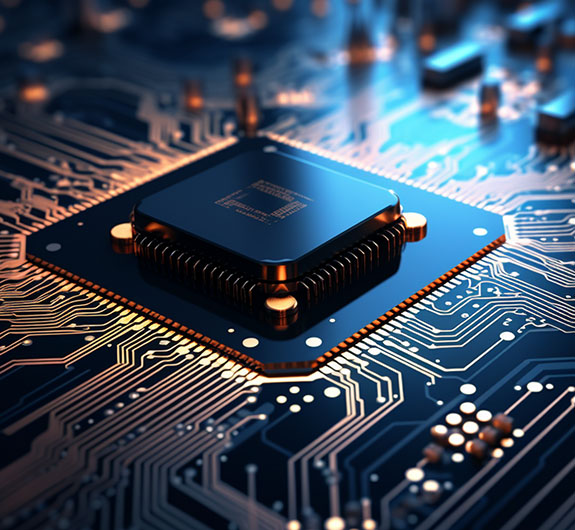In-Vehicle Layer
There are currently around 125 electronic control units (ECUs) in modern automobiles, and that number is only growing. ECUs make it possible to control the vehicle's essential systems, such as the brakes, batteries, and infotainment systems.
The components of an ECU are a CPU, memory, and input and output ports. As shown in Fig. 2, the Controller Area Network (CAN) bus, Local Interconnect Network (LIN), Media Oriented Systems Transport (MOST), and FlexRay are all used to link the ECUs together.
Because it links the most important ECUs and, if breached, might be used to interfere with the EV charging process, the CAN bus network has been the focus of security discussions. LIN doesn't demand high-speed communication, and it is a low-cost network.
However, MOST is an expensive network utilized in the in-vehicle infotainment (IVI) system that necessitates a high bandwidth transmission, so it is not a suitable choice for most mobile devices. ECUs like the airbag control unit use FlexRay because of the high fault tolerance they demand of their components.
Controller area network (CAN) bus
The CAN bus is built on a peer-to-peer network where all ECUs and peripherals are linked and can communicate with one another as partners. The network functions similarly to a centralized means of communication. There are four main benefits to incorporating this bus standard into EVs.
The first advantage of the CAN bus is that it can process real-time, concurrent commands from numerous ECUs without introducing major communication delays. The CAN bus's centralized design allows for this to happen; an ECU can send a message to all other ECUs with an arbitration identification (ID), and only the intended recipient will get the message.
As a second point, the CAN bus is separated into high-speed and low-speed branches that share a gateway. The heating, ventilation, and air conditioning controller, for example, is hosted on the low-speed CAN bus, while the brake control and battery management, which are time critical units, are connected to the high-speed CAN bus.
Third, the CAN bus allows for centralized ECU diagnostics through the on-board diagnostic (OBD) connector. By using this port, mechanics and regulatory organizations can keep an eye on the carbon emissions and battery health of EVs.
Fourth, the CAN bus is adaptable, making it simple to add or remove electronic control units (ECUs), while also being inexpensive and resistant to electric disturbances and electromagnetic interference that could otherwise disrupt the vital EV functions.
Some electronic control units (ECUs), like the tire pressure monitoring system (TPMS), have their own sensor sub-networks. A radio frequency (RF) connection between battery-powered sensors on the EV tires and the tire pressure control unit creates the TPMS.
The control unit receives sensor data and relays that information through the controller area network (CAN) to the vehicle's operator. Such specialized networks cannot be avoided. To prevent under-inflated tires from causing traffic accidents, TPMS is required by law.
External Layer
This layer includes several criteria, as shown in Fig. 2, which are all described in detail below.
Electric Vehicle Charging Station
EVs use a wired channel to coordinate charging details and preferences with a selected EVCS. The control and protection instructions include ground-fault detection, the required charging current, the current level of charge of the EV battery, and the EV's readiness for charging (using pulse-width modulation (PWM) signals).
Although this connection is often wired, there are times when EVs and EVCSs use their IP addresses to communicate wirelessly. Although widespread adoption of wireless communication is anticipated in the future, a variety of protocols exist for wireless EV-EVCS connections at present.
Physically Accessible Ports
For external connections, EVs feature USB ports, a compact disk CD slot, a secure digital SD card slot, and an on-board diagnostic (OBD) port. Electric vehicle mechanics, EV users, and EV regulatory agencies can monitor EV performance (e.g., carbon emissions), EV speed and traffic patterns, and EV battery state using the OBD port, a standardized interface to the CAN bus.
Internet Service Portals
In most cases, users can have remote access to the EV functions using Internet service portals (such as smartphone applications). Wireless communications between EVs and web-based and smartphone applications make it possible to monitor and control EV charging.
In addition, many EV In-vehicle infotainment (IVI) dashboards include Bluetooth and USB connectors so that smartphones can be linked for media playback and phone access.
Key fobs and other service portals can communicate wirelessly with EVs to allow for keyless entry. While web and smartphone apps use cellular networks and WiFi for long- and medium-range wireless communication, key fobs use short-range RF, or near-field communication (NFC).
Radio Stations
To access the location data being broadcast from a space-based radio station, current EVs require the Global Positioning System (GPS). The EVs, for instance, use the GPS signals to plot a course to the most convenient and economical EVCS or at any other user-specified location. EV infotainment programs use cellular networks to communicate with radio and navigation stations.
Equipment Manufacturer
The EVs use WANs like cellular networks and RF to wirelessly communicate with their manufacturers and OEMs in order to receive regular and ad hoc software updates and security patches. Because of their quick delivery and low costs, OEMs and vendors choose wireless patching techniques over the traditional patching procedures performed via on-site HMI (e.g., USB and Ethernet connections).
Road-Side Infrastructure and Vehicles
Today's EVs are capable of communicating with things like traffic lights and other vehicles on the road over cellular networks, allowing for more efficient and pleasant transportation. These kinds of connections aren't commonly used just yet, but that's expected to change as more and more self-driving and semi-autonomous vehicle technologies enter the market.

